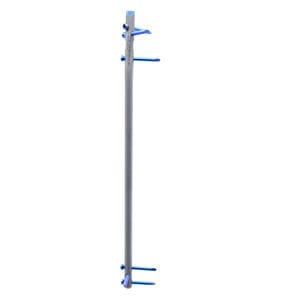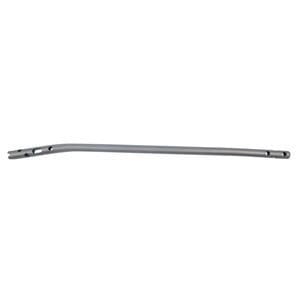
Femoral intramedullary nail trochanterproximal fixationtitanium

Add to favorites
Compare this product
Characteristics
- Joint / bone
- femur, trochanter
- Fixation
- proximal fixation
- Materials
- titanium
- Length
180 mm, 200 mm, 220 mm
(7.1 in, 7.9 in, 8.7 in)- Proximal diameter
9 mm, 10 mm, 11 mm, 12 mm
(0.4 in, 0.4 in, 0.4 in, 0.5 in)- Degree of curvature
125 °
Description
PFN Intramedullary Nails: These are used in proximal femoral neck fractures,
subtrochanteric fractures, and intertrochanteric fractures. The proximal part of the
nail has a triangular cross-section with a radiused, angled design that prevents
rotation. The distal part has a circular cross-section with a slot that allows for both
dynamic and static locking. Additionally, the distal part is channeled, designed to
reduce thigh pain. The proximal section includes a channel at a 125° angle through
which the integral compression and compression screw pair passes. This screw pair
can provide up to 10mm of compression at the fracture line using the appropriate
sizes. An inner compression screw is used to restrict the movement of this screw pair.
Additionally, a peak screw is located at the proximal end. The nail has a cannulated,
closed structure and features a 5° lateral offset angle.
VIDEO
Catalogs
Otta Medical Catalog
24 Pages
Related Searches
- Compression bone screw
- Metallic compression bone screw
- Arthrodesis nail
- Metallic intramedullary nail
- Cannulated compression bone screw
- Proximal fixation intramedullary nail
- Femoral intramedullary nail
- Locking compression bone screw
- Titanium compression bone screw
- Titanium intramedullary nail
- Distal fixation intramedullary nail
- Headless compression bone screw
- Tibial intramedullary nail
- Right intramedullary nail
- Left intramedullary nail
- Femoral compression bone screw
- Trochanter intramedullary nail
*Prices are pre-tax. They exclude delivery charges and customs duties and do not include additional charges for installation or activation options. Prices are indicative only and may vary by country, with changes to the cost of raw materials and exchange rates.







